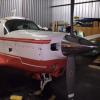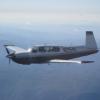Leaderboard
Popular Content
Showing content with the highest reputation since 09/06/2012 in Blog Comments
-
I just did the same repair at the same spot... I took lots of pictures and videos of the process. I will post them soon.3 points
-
The engine's fuel has boiled from the lines and into the intake ports, thereby6 flooding the engine on a hot start. But your method has us priming it even more, flooding it further. The Dukes fuel pump is closing in on nearly two grand to overhaul, and running it for 60 seconds as a standard procedure will finish it off pretty quick. Also, you can run the boost pump as long as you want, but it wont purge the fuel injector lines. That vent line should never vent fuel, or vapor. its only there to dump fuel overboard in case of a torn diaphragm in the fuel pump. But cranking it with the boost pump on will quickly fill the mechanical fuel pump and purge it pretty fast. It pretty much starts right away, no additional priming, and no sitting there with the fuel pump running.2 points
-
1 point
-
1 point
-
Thanks for the comments, jetdriven! First I'd like to point out that this is not necessarily "my method", it is simple one that has worked for many people over many years and it makes sense in many cases. For some it may not work or it may not make any sense. Then, just for an abundance of caution, I added: Disclaimer: Follow your POH unless you fully understand the pro's and con's of using other methods and other's advice. Are you referring to a boost pump on a Beech Duke? Or a Duke’s Electric fuel pump? Heat is culprit here, and there is likely no full “boiling” occurring in a short heat soak. The various hydrocarbons in gasoline (AVGas included) “boil" at different temperatures with some very low around 90dF and others very high at over 280dF. Fuel does not have to boil (fully or partially) to evaporate into a vapor. In a vapor lock, the fuel is simply turning from a liquid to vapor - how it gets that way is largely irrelevant. Could it have a boiling component? - Sure and during a long heat soak it is very possible and that would exacerbate the problem, but boiling is not necessary to create a vapor lock. The fuel in the feeder lines to the injectors, and any fuel in the intake manifold or ports are all vaporizing due to the high stagnate heat, the liquid is changing to a gas, the gas is less dense and the molecules are not of the correct atomization size to mix with the air. If you try to fire the engine in this state, you have a lean condition. Sidebar: A fuel’s measure of Volatility is important here. Petro-chemists adjust a fuels volatility for different applications; in piston aircraft the volatility index or rating needs to be high enough to allow for a relatively low pressure feed system, it needs to be correct enough for both carburetor and fuel injected engines, and it must be correct enough to work well from SL to about 25K in a wide temperature range. That’s quite a requirements spec and AVGas does this fairly well. The higher the volatility the easier it is for the liquid to turn into a vapor or to atomize well with air which is good for our very unsophisticated and crudely simple airplane motors that operate in myriad conditions. High volatility is also a Bad Thing because it allows liquid fuel to vaporize very quickly at rest, in higher temps, at low pressures, which causes hard starting. If you think about, it’s just the opposite. The method described for starting a short heat soaked engine is to first introduce air, and then to slowly add fuel with the mixture control. For a long heat soak, the mixture in cutoff while the rest of the system is pressurized, so no fuel is flowing to the cylinders, there is no chance of flooding anything. Right. The Long soak procedure where that is recommended is not intended to purge the injector lines, the mixture is at idle cut-off. The boost pump is run to purge the lower part of the system and the pumps themselves. You purge the injector lines during the short soak procedure. Thanks for pointing that out, sorry if I wasn’t clear on that. The vents are there for both reasons. A un-primed fluid pump (like a fuel pump) will not self-start, it needs to be primed - ask any firefighter who operates the pumper-tanker the theory is exactly the same. If the liquid fuel has (maybe as you surmise) boiled away from the intense heat trapped in a closed cowling, the pump(s) need to be refilled so they can push fuel again. The reason for using the electric pump is that it requires no engine cranking, and operates at a higher initial pressure in most cases. It’s far easier to get that fast spinning electric pump to get a little fuel flowing that it is to crank and crank and crank on the starter in the hopes of getting the mechanical pump to prime. Again, this is just one way to overcome a problem that has worked for many. Your milage will vary. But I have seen a number of very pleasant ‘a-ah!’ moments when these procedures we used where others may have failed. Thanks for the dialog! DVA1 point
-
I am getting ready to re-do my 68C panel (second time!). I like the classic look, with standard "T" however, am going for newer technology integrated into the panel. The installation will include an RC Allen digital Attitude Indicator, Directional Gyro and full size iPad installed where the radio rack is currently. This will allow me to get rid of the Vacuum system. A PS engineering audio panel, with remote VHF radio, Nav 2000 from Val Avionics (which will talk to the RC Allen Directional Gyro turning it into an HSI) will update my avionics. This will be installed in the "auxiliary" radio rack on the co-pilot's side. I'll use the iPad for GPS navigation "supplementing" my VOR/ILS capability. This will make for a clean, "retro looking," panel with all the "bells and whistles," inflight entertainment for passengers (via blue tooth from iPad to PS Engineering Audio Panel), moving map, synthetic vision, ADS-b, etc.. The panel will be a water jet cut 2024T3 aluminum, powder coated with a photo emulsion print to match the original wood grain (think Cadillac plastic "wood" inserts). The cost of the metal panels alone will be less than Plane Plastics covers...1 point
-
I could be wrong (as my wife always says), but the Master relay should be different than the starter relay. The starter relay is desigend for short term power inputs, where as the Master relay is designed for long term power. I'm an A&P and although my Mooney maint. experience is limited, all the other A/C I work on have this set up. If your relay is a Cuttler & Hammer, you can disassemble it, clean out the old grease, and regrease with dieelectric grease. This may fix the problem, or your relay may just be going. Strange electric things occur with a relay that is going, but not fully gone. Failure of electric flaps to fully extend or retract, especially under a load are one of those symptoms.1 point
-
I also have a Brittain and it works with my Trimble. Since my GPS is old, it could not do coupled approaches but a GTN solves that issue. An interface I believe is required (like http://icarusavionics.com).1 point
-
I have the Brittain with a GTN 650 and standard 106A and it works great! I can intercept a track on the 650 utilizing the heading bug. Works great!1 point
-
Thanks, I checked with them and it looks like it will work. I will post some pics when the upgrade start.1 point
-
When I had my Brittain autopilot installed, the folks there said it was set up to work with a gps. However, your best bet is to call Brittain and ask them directly.1 point
-
Consider moving the conversation to the forum section for better traction. Best regards, -a-1 point
-
I actually have a letter from Mooney in my files indicating that the wings have been structurally the same. The steel cage on the newest airplanes have been changed somewhat, but for what you are stating, the E, F, G, J, K have the same wings, with fuel tank differences. The F model will have the same fuel tank configuration as the J. John Breda1 point
-
The wing from the Vintage Mooney's up to present production, believe it or not, is the same wing but for the fuel tank configurations and the wing tips. If you are interested, I have a very clean wing from a 67 F model available as well. You can e-mail me at johnabreda@yahoo.com or call me at (617) 877-0025. Thanks, John Breda1 point
-
Is it oil...or is it grease? Grease typically comes from herniated seals at the hub. herniated seals come from over-servicing. Oil... :-( oil coming from your prop is more serious.1 point
-
Turn your altemeter to read sea level ( 0 feet elevation no matter what your current elevation is). Then read barometric pressure in the kollsman window. This is what your MAP gauge should indicate at your current elevation without the engine running.1 point
-
REGARDING HIGH OIL TEMP: Make sure temp gauge is reading correctly. Prob. not your issue due to hot cowling. Check baffeling. (Happens) Make sure cowl flaps are not mis-rigged. (Happens) Check for birds nest or other debri behind oil cooler. (Happens) Check for hot gas ring blow by, thereby heating up the crankcase oil. (Compression check on each cylinder) (Uh-oh) Check to make sure Vernatherm is opening correctly to allow oil to circulate through oil cooler. (Your probable cause) (Microwave, hot water and micrometer to measure movement of vernatherm.) Make sure vernatherm has been ADJUSTED and is seating CORRECTLY.. Easy to eyeball vernatherm seat with mirror and flashlight. (Always check seating) Check for varnish and sludge deposits in the cooler which will cut down on heat transfer. (Seen em full of sludge before) And always remember ancient Chinese proverb: "Oil temp. rise, oil pressure fall, Mooney land in field." I would not push throttle forward again until issue resolved. Good luck.1 point









